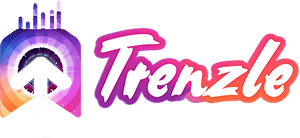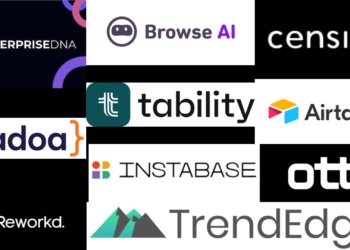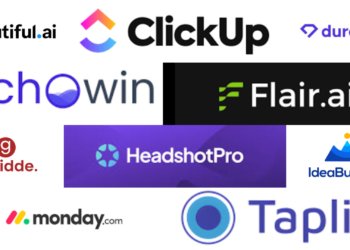No products in the cart.
6 Easy Steps To Create Your Book Launch Calendar
It takes more work than many authors realise to get ready for a book launch. To do it well, months of planning may be required. However, that preparation is well worth your time if you want to achieve a critical mass within your target audience and spread the news about your book. The launch of your book is the most important time to do that. Here are 6 easy steps to create your book launch calendar.
1. Define the 3 Tiers of Your Audience
Anyone you have the capacity to personally inform about your book is your audience. The three layers of your audience relate to how close you are to them, as I indicated. How frequently you wish to communicate with these various groups of people will depend on how close you are to them.
The 3rd tier consists of those with whom you desire to communicate the least. Perhaps you don’t have their consent to contact them frequently or you don’t communicate with them frequently. These might be individuals you met at a conference but haven’t spoken to frequently lately, for instance. Alternately, the majority of your Facebook friends are definitely Tier 3 connections if you only post on the social media platform three times per year.
People in Tier 2 are those you wish to interact with more. These are persons you’re a little bit more close to and are free to get in touch with. Maybe they once signed up for your newsletter. They don’t expect a lot of content from you, though, and you’re not very close to them. For instance, if you regularly post on Twitter and have 1,500 followers, they are accustomed to seeing your name in their feed. However, you are too far away from them to email or directly contact with them all.
The individuals in Tier 1 are those who are closest to you. In addition to close friends and family, these could be contacts you have made on a social media platform where you post frequently or individuals who have subscribed to a list that you regularly email. Choose the most effective way to reach each rank. Email is typically the ideal tool for Tier 1 contacts that you are familiar with. A social media post may be the best approach to reach out to those you don’t know all that well.
Your delivery style should always reflect how close of a bond you share. Think about it. Would you enthusiastically reply to a string of extremely private emails from someone you met three years ago at an event? Maybe, if you genuinely click with this person. But most likely, that manner of speaking would come out as pushy or excessively familiar. Don’t forget that the medium you use to communicate can be just as essential as the message when trying to persuade readers to buy your book.
2. Set Your Launch Week Dates for Tier 3
Don’t stress about encouraging your Tier 3 audience to purchase the book in advance. You don’t want to over-inform these people because you don’t know them very well. Being focused on your communication is preferable. Tier 3 should only be contacted twice.
On the day of the release, get in touch with them to let them know your book is out and what it’s about. The customary day for book launches is Tuesday. On Friday of launch week, you wish to get in touch again (i.e., a few days later). You might express gratitude for their assistance, review a few of the week’s triumphs, and encourage them to buy the book.
Recall that I stated “remind.” This is not an aggressive sales pitch, just a friendly reminder. It is your responsibility with these two communications to inform and excite them about your book. They will get in touch with you, learn more about you, or both if they want to.
3. Set your Pre-Launch and Launch Week Dates for Tier 2
The same two days that you used for Tier 3 for Tier 2 outreach are launch day and the Friday of your launch week. However, you’ll also be adding two extra touchpoints. First, you’ll get in touch with your Tier 2 connections two months before your book launches to let them know about it and when it will be released.
You could also wish to distribute the book’s cover and any essential details. The week before your launch, you’ll also get in touch with them to heighten excitement and generate anticipation. You could wish to include a chapter from the book or a few customer testimonials in this email.
4. Set Your Pre-Launch and Launch Week Dates for Tier 1
The 1st tier contains your closest contacts. These people expect a lot of communication from you. For Tier 1 connections, you’ll hit those same 4 touchpoints that you hit with Tier 2. Then, you’ll also add 2 more:
- About a month before your launch, contact them to continue to build their excitement. You may want to include some sample content.
- The day before your launch, reach out and really emphasize your excitement that the book is coming the next day. Share whatever resources you can to help build their anticipation.
Pro Tip: Consider sending an email with a free copy of the book to your closest friends one month prior to the launch. Tell them you’ll follow up, ask them for an Amazon review, and invite them to read the book in that message. Then, make the request once more the day of the launch.
5. Set Your Pre-Launch and Launch Week Content by Date
I recommend putting these dates on an actual calendar. Set reminders for:
- The 6 touchpoints for your Tier 1 audience
- The 4 touchpoints for your Tier 2 audience
- The 2 touchpoints for your Tier 3 audience
In this manner, you’ll keep in mind precisely who, when, and on what platforms you ought to be contacting them. You must also choose the material that will go with each of these touchpoints. If you intend to share content on social media, think about making a pre-launch image to tease the publication date of the book. Alternately, publish a teaser image of your book’s cover.
You may also think about advertising a special offer if your pre-launch objective is to increase your email subscriber base. People can click through to your website, for instance, to view a preview of the material. You can also provide them with another kind of free resource, such as a worksheet, a webinar, or other materials pertinent to your book, if they sign up for your newsletter.
On launch day itself, plan to post on every channel available to you. Have different content ready for your different social media platforms, email list, and other means of communication.
6. Set Your Post-Launch Content and Dates
All of the communication we’ve talked about so far happens prior to launch and during launch week. However, after your book is published, you’ll also want to communicate with this audience. The distinction between your pre-launch and post-launch marketing is quite important. After your book is published, people will grow weary of hearing you yell, “Buy my book! My book is now available! Visit Amazon to find my book! Look at my book!
You’ll need to change your focus in order to keep your audience interested. Instead of talking about the book, concentrate on how you can regularly add value using the concepts from the book. This can take many different shapes. It can consist of several enlightening emails. a video series that focuses on the issue the book attempts to solve. an ongoing podcast. Instagram posts using straight quotes from your book.
Pick an ongoing marketing strategy that you and your audience will find appealing. But any option you choose, make sure that serving your audience is your first priority. You now have a clear plan for effective pre- and post-launch promotion, beginning two months before the release date of your book.











